THIOKOL AND LMC TRACKED VEHICLES
Text is at the bottom of the page
1 - Frandee in 1949. Often on the Frandee, track cleats, as not seen here, were in hard wood.http://www.forumsforums.com/3_9/showthread.php?t=27424, an interesting site.
|
|
2 - On some Frandee, steering was assisted by a single ski suspended from a long boom on the external front of the vehicle. It could be folded on top of the machine in a rest position. The skiing was led by a steering wheel in the cabin. Here is model D, S/N 37, Snoshu. www.forumsforums.com |
|
3 - The Sea Wolf Frandee, 1957, the ground surface of the tracks seems somewhat reduced. http://www.amphibiousvehicle.net/amphi/F_F.html, an excellent site.
|
|
4 - Snow-Machine Model 4VL of Thiokol Trackmaster, 1959, had two shafts, one for each track, no differential but a power splitter. Track grousers were made of metal and wood. |
|
5 - A Snow-Machine Model 4VL of Thiokol Trackmaster, 1959, sold on the site ebay in 2007 $ 5,500, that is to say half of its value, which shows the distrust of buyers of a single model, because of the spare parts and the lack of information. |
|
6 - Restored Thiokol Model 4T10 before 600 series with power divider like 4V series. www.forumsforums.com
|
|
7 - Thiokoll Model 1101 had a Ford Falcon engine 101 hp, a controlled planetary differential and speed of 56 km / h.www.forumsforums.com |
|
8 - Model 105 of 1 t payload with Ford engine V6 101 hp and controlled planetary differential. He participated in 1962 at the Swamp Fox II Exercise in Panama and extricated itself better than all other from wet vegetation.Picture from book of Fred Crismon ‘US Military Tracked Vehicles’, Motorbook International Publishers & Wholesalers, 1992. |
|
9 - Thiokol Trackmaster 601 of the U.S. Air Force, 1963, blue color. http://en.wikipedia.org/wiki/Snowcat |
|
10 - Model 1401 Imp participated in the exercise RAVE II in 1963. He behaved well in dry or marshy land. 18 hp engine, mass only 540 kg. Picture from the review 'Popular Science', Nov 1963. |
11 - Each pair of wheels of the Imp hooked at the end of leaf springs. Picture from the review 'Popular Science', Nov 1963. |
|
12 - Model 1401 took part in Exercise RAVE II in 1963 and was tried by the U.S. Army in Alaska in 1964 to pull skiers at 20 km / h. Wisconsin Engine 30 hp with a total mass of 1360 kg.Picture from book of Fred Crismon ‘US Military Tracked Vehicles’, Motorbook International Publishers & Wholesalers, 1992. |
|
13 - Model 1402 Imp in 1964 with Wisconsin motor of 30 hp, 635 kg payload, 15 cm ground clearance, planetary differential in oil bath, rubber sprockets, 80% maximum slope in snow.http://www.tahoebasin.com/snowcats/imp.htm |
|
14 - 1404 Thiokol Imp, 1976.www.chameleoninc.com/snowcats/gallery.html |
|
15 - Super Imp, 1979, Ford Motor 104 hp 6 cyl, maximum speed 48 km / h, direction by band brakes.www.forumsforums.com
|
|
16 - The Swamp Spryte, 1964, also known as the Model 603, with no cabin.www.forumsforums.com |
|
17 - Swamp Spryte of 1964 with cab, model 609.www.forumsforums.com |
|
18 - Swamp Spryte amphibious model 604 from 1964, available only without cab. Pict from a brochure of Ratrac, J M M archives.
|
|
19 - The same seen from above. Pict from a brochure of Ratrac. |
|
20 - Swamp Spryte Series 1300, 1965, mass 1400 kg, Ford 6 cyl engine 101 hp, speed 55 km / h, in water 7.5 km / h.http://ookaboo.com/o/pictures/picture/25075436/Amphibious_Thiokol_Swamp_Spryte_All_Terr |
21 - Snow Spryte Modèle1200 Series, 850 kg payload, suspension by trailing arms and torsion springs, polyurethane sprockets, two passengers for 1201 and 6 passengers for 1202, Ford 6-cylinder engine 101 hp. This model could receive the new roll and the snow plow hydraulically controlled from the cab. Pict from a brochure.
|
|
22 - Spryte Thiokol 1200 B model in 1967 with its wide tracks to move in any snow. |
|
23 - Thiokol Spryte 1200 C model in 1974. |
|
24 - Juggernaut 4T with auger, total mass 13.5 t, 5.4 t payload, maximum speed 34 km / h, Ford 6.4 liter V8 engine.www.forumsforums.com |
|
25 - Juggernaut 4T or 6T extricating itself from a ditch. |
|
26 - Another Juggernaut 6T in 1966. Picture from a brochure. |
|
27 - Super Tracked Carrier Juggernaut 6T of 1972, mass 16 t, 7 t payload. |
|
28 - This Juggernaut 6T, single model, is equipped with a Dodge Ram cab. Front view.http://www.pirate4x4.com/forum/dodge/972697-bet-youve-never-seen-dodge-like-part-2-a.html |
|
29 - 30 T, payload 30 tons, and even beyond, GM 8V 71 engine, maximum speed 21 km / h, length 14 m. Wading depth of 1.5 m. The picture is a drawing from a brochure. |
|
30 - 30T Thiokol : Foremost had built in the mid-60 the RN 200, a tractor semi-trailer and four tracks and in 1969, the Husky 8 with a rigid frame for 36 t payload. The Husky 8 was also marketed under the trade name Thiokol Juggernaut 30T (photo) but probably made in Calgary, Alberta, not at Logan. Pict from SAE Paper 'Heavy Duty Over-Snow Off-Highway Vehicles' by Ross V. Eskelson N° 690573, 1969.
|
31 - Packmaster 1969 was equipped with a bar of compaction, which could be used as a rear blade or scarifier and a hydraulic lift. In the 70s, the Packmaster dominated the market in the Eastern USA with its hydraulic lift as did Tucker before.http://www.snow-groomer.com/thumbnails.php?album=41 |
|
32 - Hydromaster, in addition to the civilian market, equipped U.S. Air Force around 1981. The hydraulic front blade could follow closely the road or escarpments. Very wide tracks, 1.4 m wide.http://www.pistenraupe.de/Ratrac.html |
|
33 - ST Ratrac in 1969, Thiokol Packmaster imported into Europe by Ratrac, Zurich.http://www.pistenraupe.de/RatracST.html |
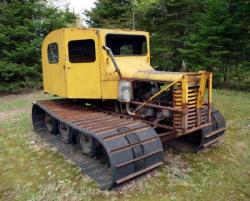
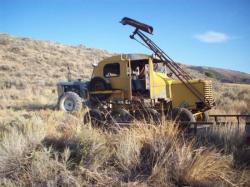
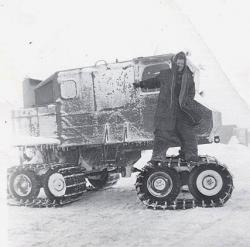
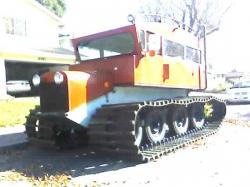
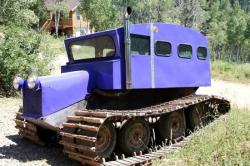
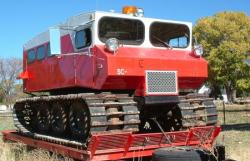
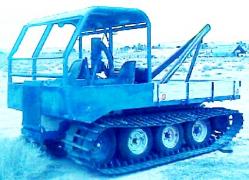
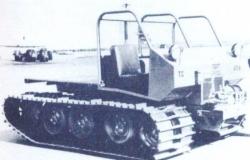
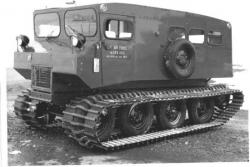
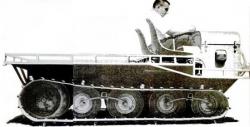
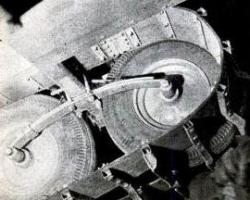
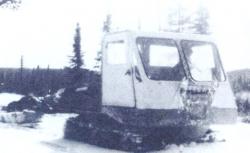
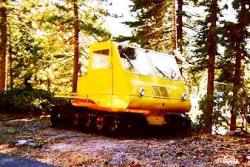
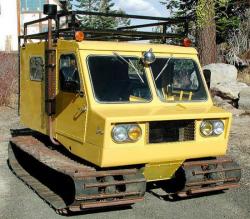
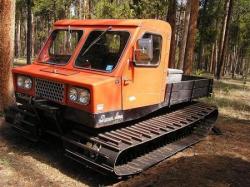
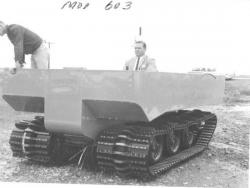
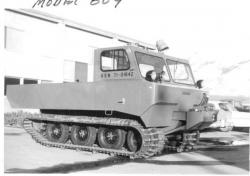
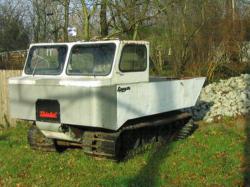
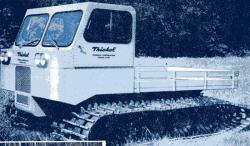
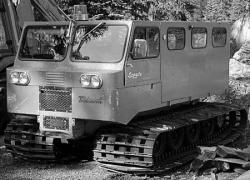
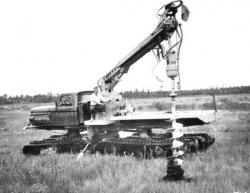
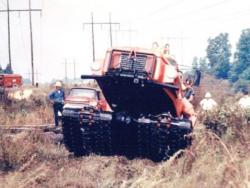
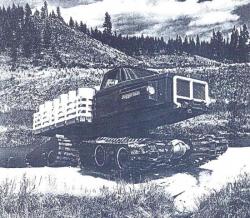
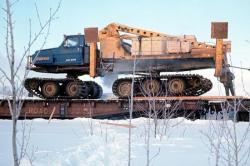
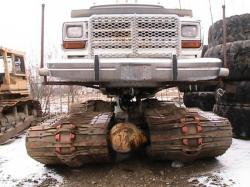
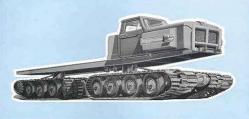

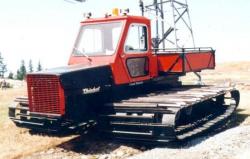
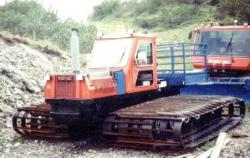
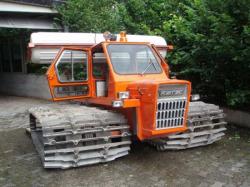
 Français
Français
 English
English
 Español
Español
 Italiano
Italiano
 Deutsch
Deutsch
 Nederlands
Nederlands
 Portuguesa
Portuguesa